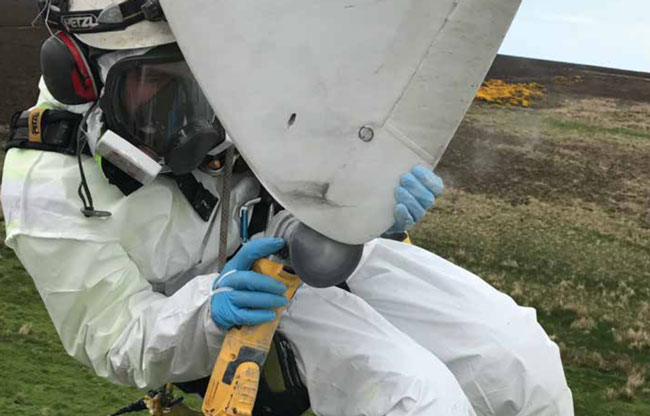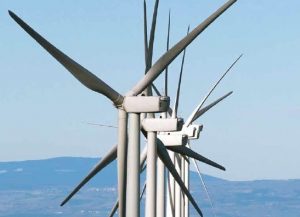O&M managers need to more actively and closely monitor the health of turbine blades at newer wind farms under five years of age, with the average of seven repairs required per turbine significantly exceeding that of the 2.2 repairs for older wind farms.
This is according to leading blade repair and inspection specialist Altitec, which has recently launched its 2018 Blade Repair Atlas, which provides a detailed breakdown of its operations across the UK, Europe and further afield.
The global growth of the wind industry has seen continued innovation in turbine technologies, with ever larger capacity models coming online. This has also resulted in increased blade spans, leading to new O&M challenges and a need to ensure blades are serviced regularly and to a high standard.
Altitec’s Blade Repair Atlas indicates newer projects are likely to require more active monitoring and maintenance of the condition of turbine blades, even though owners and operators may expect to prioritise the needs of older wind farms.

“We recommend that all wind farms undergo regular blade inspections, no matter their age, to ensure they continue to perform at their optimal levels and that energy production remains as high as possible. But our records indicate that, during the first five years of a wind farm’s operational lifetime, O&M managers may be more prone to overlooking the need for blade maintenance,” said Tom Dyffort, managing director of Altitec Group. “Ultimately, this will only result in more serious faults developing, more repairs being required and longer periods of turbine downtime.”
The Atlas also provides in-depth analyses of the most frequently required internal and external blade repairs. Repairs to the internal blade structure, in particular, require close attention and intensive repair work by technicians.
In Altitec’s experience, retrofit lamination makes up some 60 percent of all internal damage repairs, requiring extensive preparation of and cleaning of the blade before the inner laminate can be treated. Additional leading causes of internal damage includes that to the bulkhead brackets (23 percent) and bulkhead sealing (17 percent) at the root end of the blade.
External repairs, however, constitute the vast majority of repairs to turbine rotor blades, and typically involve patching and replacement of areas of the blade’s surface layers. These can often become damaged and distorted due to the mechanical stresses placed upon them as the blades flex and twist under loading, as well as general wear from the effects of weather.
The Atlas records the leading causes of damage requiring external repairs as being a blade’s gelcoat (58 percent), top coat (20 percent) and leading edge (14 percent).
More information: www.altitec.co.uk



























